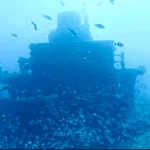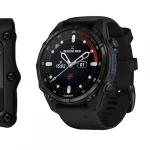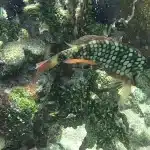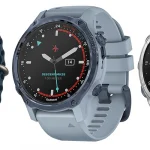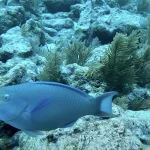Understanding Buoyancy Control
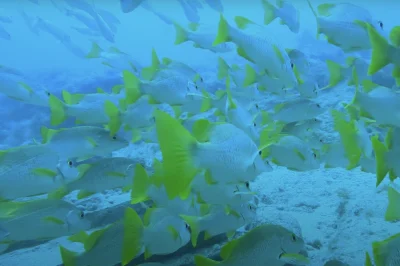
Table of Contents
- Understanding Buoyancy Control
- Reading Underwater Currents Like a Pro
- Navigating the Depths with Confidence
- Debunking Common Diving Myths
- Essential Safety Techniques Every Diver Should Know
- Predicting Marine Life Encounters
- Communication Skills for Underwater Teams
- Evaluating Diving Gear Performance
Introduction
Scuba diving in the Florida Keys is an exhilarating experience for both novice and seasoned divers. This paradise offers crystal clear waters, abundant marine life, and a chance to refine your diving skills. In this guide, we’ll explore the critical skills you will develop in your first ten post-certification dives in Key Largo, ensuring you make the most of your underwater adventures.
Understanding Buoyancy Control
Reading Underwater Currents Like a Pro: Comparing Key Largo Dive Areas
Key Largo offers an exceptional variety of dive sites, each shaped by distinct current patterns that affect both the diving experience and local marine ecology. Understanding these current differences is critical for advanced dive planning and safety.
Shallow Coral Reefs: Sites like John Pennekamp Coral Reef State Park and Molasses Reef are revered for their typically light to moderate currents. These currents, generally gentle at depths between 18 to 40 feet, allow for easy navigation, making them ideal for post-certification divers honing their buoyancy and navigation skills. Visibility here is often excellent, ranging from 70 to 100 feet, supported by shallow depths and minimal sediment disturbance. Conditions remain stable enough for confident underwater photography and extended explorations of diverse marine habitats.
Deep Wreck Sites: Deep wrecks such as the USCGC Duane and USS Spiegel Grove stand in stark contrast with respect to underwater flow. These sites, sitting between 120 to 140 feet deep, are frequently exposed to strong and variable currents. For example, currents here can fluctuate from manageable to forceful enough to require dive cancellations, especially on Spiegel Grove. However, strong currents in these areas promote high water clarity, often exceeding typical visibility due to constant open-water flushing. Divers can anticipate enhanced encounters with pelagic species like bull sharks and barracudas, which thrive in stronger flows enriched by abundant nutrients.
Shallow Wrecks: Wrecks like the Benwood, located around 25 to 45 feet deep, experience variable currents largely dependent on weather patterns. These conditions may shift from calm to moderate flow, offering ideal scenarios for divers developing current management skills. Visibility here is less predictable compared to reefs or deep wrecks, commonly fluctuating in response to surface weather and storm activity.
Current Statistics and Conditions Summary:
- Shallow reefs: Light currents, excellent visibility (70–100 ft), favourable for skilled beginner to intermediate divers.
- Deep wrecks: Moderate to strong currents, excellent visibility maintained by open-water movement, recommend for experienced divers comfortable with currents.
- Shallow wrecks: Highly variable current strength and visibility; conditions demand careful dive planning and adaptability.
Additional Considerations: Currents in Key Largo are dynamic—affected by seasonal weather shifts, wind speeds, and oceanographic factors such as tides and frontal systems. Real-time current and visibility data, frequently updated by local dive operators, are invaluable for avoiding hazardous conditions and optimizing dive quality. Divers aiming to maximize their post-certification dives should prioritise shallow reefs in calm conditions and approach deep wrecks on days with minimal current.
Reading Underwater Currents Like a Pro
Mastering Compass Navigation Techniques
Using a dive compass effectively is essential for confident underwater navigation around Key Largo’s diverse reef systems. Start by holding your compass flat and level in front of you. Align the lubber line—the fixed directional arrow on the compass—with your intended heading. Then, rotate the bezel ring so the magnetic north arrow aligns with the index marks. This locks in your course before you move.
During the dive, use prominent visual references like coral heads or rock formations to swim towards while periodically checking the compass to ensure you stay on course. This approach helps reduce the need for continuous compass glances, which can cause disorientation. Consistently maintaining the compass level ensures accurate readings; avoid tilting it, as this can skew the needle’s alignment.
Before you descend, take bearings for your planned route, noting both the outbound heading and the return path by using reverse bearings on your compass. This planning makes it easier to navigate back safely even in reduced visibility or strong currents, conditions often encountered in the Florida Keys.
Leveraging Natural Landmarks for Underwater Navigation
Complement your compass skills by developing an eye for natural underwater landmarks unique to Key Largo’s environment. Take note of distinctive coral formations, drop-offs, sand channels, or even wrecks that stand out as reliable visual guides.
- Coral formations and reef walls: Use these large, recognisable features to orient your direction during a dive.
- Sunlight and water clarity: In clear conditions, the position of the sun can hint at cardinal directions.
- Water currents: Understanding the general flow can assist in maintaining a steady course by swimming against or across current lines.
By observing these elements, you can navigate more intuitively and correct your course without relying solely on instruments. This method proves invaluable when a compass is temporarily obscured or when subtle course adjustments are needed.
Integrating Compass and Natural Navigation for Best Results
| Technique | Advantages | Best Use Cases |
|---|---|---|
| Compass Navigation | Precise bearing control and route planning | Low visibility, long-distance or complex routes |
| Natural Landmark Navigation | Less dependency on equipment, easier orientation | Clear water, identifiable features, or strong currents |
Combining these navigation tools enables you to adapt fluidly to changing underwater conditions. Use your compass to set a solid directional framework and natural features as checkpoints during your dive. This practice promotes safety, helps conserve energy, and enhances your overall underwater confidence.
Key Best Practices for Underwater Navigation
- Avoid metal interference: Keep your compass away from metal dive gear such as tanks or knives to prevent skewed readings.
- Smooth and steady swimming: Maintaining consistent buoyancy and finning reduces unintended course deviations.
- Backtracking skills: Practice reverse bearings to return along the same path, which is crucial in complex reef environments like Key Largo’s.
- Regular practice: Hone your skills by completing exercises like swimming grid patterns or navigating between set landmarks.
Mastering these navigation skills alongside buoyancy control empowers you to explore the Florida Keys’ underwater landscapes with confidence and safety, enhancing the enjoyment and success of your post-certification dives.
Navigating the Depths with Confidence
Debunking Common Diving Myths in Key Largo
For divers exploring Key Largo, understanding the realities beneath common myths is essential for safe and enjoyable dives. Here are several prevalent misconceptions debunked with data and expert insight:
- Myth: Key Largo’s waters are always calm and easy.
While Key Largo is famous for its beautiful reefs and relatively accessible dive sites, the conditions can quickly change, especially with prevailing southeast winds creating rough seas. These conditions challenge even experienced divers, particularly during boat re-entry after a dive. Operators are skilled at handling these situations, but novices often underestimate the impact of swift changes in sea state. - Myth: Experience alone eliminates risk.
Recent incidents in Key Largo demonstrate that even seasoned divers are vulnerable to medical emergencies underwater. Cases such as divers losing consciousness at popular sites highlight that physical health, not just experience, is critical. Being physically fit, aware of your limits, and never diving beyond your certification and training are key to reducing risks. - Myth: Dive operators always prioritise safety above all else.
While many operators maintain high safety standards, factors like tight schedules or pressure to proceed despite marginal weather increase risk. Divers should always personally assess conditions on dive day and feel empowered to decline or postpone dives if uncomfortable with the environmental factors or the planned dive profile.
Key Safety Insights Backed by Data
Understanding local safety trends further dispels myths and drives safer diving practices:
- Monroe County, home to Key Largo, leads Florida in boating accidents with over 80 incidents involving divers and snorkelers reported recently, emphasising the need for caution both in and out of the water.
- Diving deaths related to overlooked health issues or unsafe diving practices have risen, underscoring the necessity for medical clearance and conservative dive planning.
- Popular sites like Christ of the Abyss and Grecian Rocks require particular vigilance due to currents and depth, despite their allure and accessibility.
Practical Steps to Stay Safe and Enjoy Key Largo Diving
- Conduct thorough health assessments. Address any cardiac or respiratory conditions prior to diving to avoid emergencies underwater.
- Perform meticulous gear checks. Properly maintained BCDs, regulators, and dive computers reduce equipment failure risks.
- Always dive with a buddy. In challenging sea conditions, the buddy system is a critical safety net.
- Respect local currents and weather changes. Avoid dives during strong currents or unstable weather; heed operator advice and local forecasts.
- Adhere strictly to dive plans. Stay within your certification limits, dive depths, and no-decompression limits to prevent accidents.
By breaking down these myths with evidence and expert guidance, divers visiting Key Largo can better prepare to safely explore its spectacular underwater world.
Debunking Common Diving Myths
Common Safety Mistakes Divers Make and How to Recover
Even experienced divers can fall prey to common safety mistakes, but knowing how to recognise and recover from these errors is crucial—especially when diving in dynamic environments like Key Largo’s reefs. Below are key mistakes divers often make along with expert-backed strategies to recover and reinforce safety.
Skipping or Rushing Pre-Dive Safety Checks
One of the most frequent missteps is neglecting the essential BWRAF pre-dive routine (BCD, Weights, Releases, Air, Final check). Overlooking this can leave divers vulnerable to equipment malfunctions, like a closed tank valve or loose weights, risking underwater emergencies.
Recovery: If a problem arises underwater (e.g., air flow issues), immediately communicate with your buddy using established hand signals and carefully execute a controlled, slow ascent. Abort the dive if needed—prioritising safety over continued exploration is vital.
Poor Buoyancy Control
Incorrect buoyancy management, such as over-inflating the BCD or improper weighting, often results in rapid ascents or descents that can cause decompression sickness or physical injuries.
Recovery: Use your breath to fine-tune buoyancy and rely on slow, deliberate BCD adjustments. If a rapid ascent happens unexpectedly, implement a safety stop for 3–5 minutes at around 15 feet to allow nitrogen to safely dissipate before surfacing fully.
Neglecting Dive Planning and Overextending Limits
Diving beyond your certified training depth or ignoring time limits increases risks like nitrogen narcosis or decompression sickness.
Recovery: If you find yourself exceeding planned depths or bottom times, stop descending immediately and begin a slow, controlled ascent with a safety stop. Adhering to dive tables or a dive computer’s guidelines helps mitigate this risk in future dives.
Rapid Ascents and Descents Without Equalising
Ascending or descending too quickly, especially without frequent ear equalisation, can cause barotrauma, lung injuries, or decompression sickness.
Recovery: After a rapid ascent, perform a safety stop and monitor for any symptoms of decompression sickness. If symptoms like joint pain or dizziness appear, seek medical evaluation promptly. For descending, pause to equalise ears regularly, preventing pressure-related injuries.
Mismanaging Air Supply
Failing to monitor your air gauge or miscalculating reserve air is a frequent cause of emergency ascents.
Recovery: Always communicate with your buddy if air levels approach critical limits. Begin a slow, safe ascent together, making sure to perform a safety stop to reduce DCS risk. Staying within your air supply limits is essential to avoid panic-driven emergencies.
Underestimating Strong Currents
Key Largo’s reef sites sometimes feature currents that can pull divers off course or separate them from their group.
Recovery: Instead of swimming directly against a current, swim perpendicular to it to regain your position. If swept away, deploy a surface marker buoy (SMB) and signal your boat. Remaining calm and conserving energy is imperative until help arrives.
Mastering these recovery techniques complements solid pre-dive preparation and navigation skills, empowering divers to handle unexpected challenges and enjoy the vibrant underwater world of the Florida Keys with confidence.
My Favorite Dive Computers
I have compared the 3 top diving computers for each category to help making the right choice easier:
Essential Safety Techniques Every Diver Should Know
Predicting Marine Life Encounters in the Florida Keys
Understanding the patterns and behaviours of marine species in the Florida Keys can greatly enhance your chances of remarkable underwater encounters. Sightings of certain animals are tied closely to seasonal migrations, breeding cycles, and environmental conditions, offering predictable windows for divers to plan their adventures.
Seasonal Trends and Key Species
- Great Hammerhead and Whale Sharks: These large migratory sharks are primarily seen near Bahia Honda and around notable shipwrecks such as the Vandenberg. Sightings peak during the summer months, correlating with tarpon migration patterns. Some great hammerheads remain year-round, while others migrate along the Gulf and Atlantic coasts depending on water temperature changes.
- Sea Turtles: The Florida Keys host five of the world’s seven sea turtle species. The peak season for turtle activity—including nesting and hatchling releases—falls between May and October. Green sea turtles are the most comonly seen, with leatherbacks, hawksbills, and Kemp’s ridleys also spotted regularly. Divers visiting in this window stand a higher chance of witnessing these iconic creatures.
- Reef Fish Diversity: Yellowtail snapper and blue striped grunt are among the abundant reef fish species. Their presence is consistent year-round, but health and population fluctuate based on reef conditions and conservation efforts.
Maximising Your Encounters
- Choose Dive Sites Known for Biodiversity: Areas within the Florida Keys National Marine Sanctuary, such as Sand Key and Western Sambo, offer exceptional clarity and rich habitats that attract diverse marine life.
- Plan Dives According to Species Seasonal Peaks: Schedule trips from late spring to early fall for turtle encounters and summer months for large shark sightings to align with natural migrations and breeding seasons.
- Observe Without Disturbing: Being patient and respectful of marine animals’ space increases the likelihood they will come close. Avoid chasing or touching which can scare away the wildlife.
- Stay Informed with Monitoring Data: The Florida Fish and Wildlife Conservation Commission and NOAA run Reef Visual Census programs tracking reef fish populations and ecosystem health. These reports offer insights on current species abundance and categories of concern.
Tapping into these patterns and conservation data not only improves your encounter odds but also fosters responsible diving practices that support the Keys’ delicate marine ecosystems.
Predicting Marine Life Encounters
Mastering Underwater Communication: Essential Techniques for Team Diving in Key Largo
Effective communication underwater is vital for safe, coordinated, and enriching group dives, especially in Key Largo’s dynamic marine environments. Since verbal communication is impossible under the surface, divers rely heavily on refined non-verbal signals and strategies to maintain team cohesion and safety.
Essential Hand Signals Every Diver Should Know
- OK Signal: Form a circle with your thumb and index finger while extending the other fingers. It serves as both a question (“Are you okay?”) and an answer (“I’m okay”). Always acknowledge others’ signals with this to confirm understanding and calm any concerns.
- Problem or Not OK Signal: Wave an open hand back and forth in front of you to indicate trouble. Follow this by pointing clearly to the specific issue, whether it’s equipment malfunction or a physical discomfort.
- Ascend/Descend Signals: Thumbs up means ascend, and thumbs down means descend. These indicate changes in depth, helping the group stay synchronised during vertical movement.
- Low on Air: Make a flat hand across your throat. This urgent signal triggers immediate attention and action for a safe ascent.
- Emergency or Distress Signal: Wave one or both arms in broad arcs above your head to signal distress, ensuring your group spots you easily from a distance.
Advanced Techniques to Enhance Team Communication
- Use of Noise-Makers: When hand signals aren’t noticed, tapping your tank with a noise-maker or a tank banger can quickly draw a buddy’s attention, especially useful in low-vis or strong current conditions typical of some Key Largo sites.
- Pre-Dive Signal Agreement: Always conduct a thorough brief where all divers review and agree on signals to be used, including any additional personalised signs for specific conditions or emergencies. This mutual understanding cuts confusion underwater.
- Tactile Communication for Special Needs: In teams including divers with limited visibility, gentle taps or squeezes can effectively replace visual cues, ensuring inclusivity while maintaining clear communication.
- Use of Slates and Wet Notes: For complex messages that can’t be conveyed with signals, waterproof writing slates help clarify plans or unexpected changes without surfacing prematurely.
Pro Tips for Communication Success in Key Largo
- Practice Signals Regularly: Reinforce your team’s muscle memory for hand signs with dry-land drills and in-water rehearsals before each dive.
- Maintain Close Proximity: Due to variable visibility and occasional currents in Key Largo, keeping close to your dive buddy and group members ensures signals are seen and responded to promptly.
- Confirm Receipt of Signals: Respond to every hand signal, especially the “OK,” to avoid misunderstandings that could lead to unsafe situations.
- Adapt to Environmental Conditions: In more challenging locations, reduce non-essential signals to minimise distraction and focus on safety-related messages.
- Debrief After Dives: Share feedback on communication effectiveness to refine and personalise signals and protocols for future dives.
By mastering these communication skills, divers in Key Largo can dramatically improve team safety, efficiency, and enjoyment, allowing them to focus on exploring the rich underwater ecosystem with confidence and camaraderie.
Communication Skills for Underwater Teams
Evaluating Diving Gear Performance in Key Largo
When selecting diving gear rental in Key Largo, the performance and reliability of equipment—such as BCDs, regulators, wetsuits, and tanks—play a crucial role in maximising safety and comfort underwater. Two of the most prominent dive centres, Key Largo Dive Center (KLDC) and Rainbow Reef Dive Center, dominate the rental gear scene, each catering to different diver preferences and skill levels.
Key Largo Dive Center is frequently praised for its consistently well-maintained gear. Divers repeatedly note the quality and readiness of their rental equipment, highlighting that BCDs, regulators, wetsuits, and tanks are reliably serviced and clean. This dive centre is renowned for a strong focus on safety and professionalism, with knowledgeable guides like Erica enhancing the dive experience especially for novice and intermediate divers. Users tend to appreciate the attentive customer service and the stability of the equipment, making KLDC a dependable choice for those wanting a seamless dive tailored to a broad range of experience levels.
In contrast, Rainbow Reef Dive Center boasts the latest in dive technology with recently upgraded equipment from brands like Aqualung and Suunto, including state-of-the-art dive computers, regulators, and BCs. These top-tier rentals have earned Rainbow Reef multiple accolades, including the “Best Overall” and “Quality of Rental Gear” awards from SCUBA Diving magazine. However, user reviews reveal a split perception: while gear quality and boat facilities score high, some experienced divers report shorter dive profiles and occasional inconsistency in guide interaction, citing a model that caters more heavily to vacation divers and group novices. This may affect divers looking for deeper or more technical dive experiences.
| Feature | Key Largo Dive Center | Rainbow Reef Dive Center |
|---|---|---|
| Gear Quality | Reliable, well-maintained, consistently positive feedback for BCDs, regulators, tanks | Newest equipment (Aqualung, Suunto), regularly updated, industry-awarded |
| Service Focus | Strong safety emphasis; excellent for novice and intermediate divers | Vacation diver-oriented; may limit dive depth and duration for experienced divers |
| Guided Dives | Highly rated for knowledgeable, professional guides ensuring consistent dive experiences | Mixed reviews; some experienced divers cite lack of personalised attention and shorter dives |
| Awards & Recognition | Positive customer loyalty and reviews but fewer formal awards | Multiple industry awards for gear quality, boats, staff, and overall experience |
Additional local rental options like Horizon Divers and Conch Republic Divers also earn commendations for attentive crews and flexible dive trips accommodating technical divers and small groups, emphasising personalised service and well-maintained gear. By contrast, some centres have received criticism related to safety protocols and equipment maintenance, highlighting the importance of choosing a rental shop with a strong reputation in both gear quality and dive guidance.
For divers visiting Key Largo, the choice of rental gear centre depends on one’s priorities: divers seeking trustworthy, straightforward service and equipment reliability may lean toward Key Largo Dive Center, while those wanting cutting-edge gear with a polished facility might prefer Rainbow Reef, albeit with some caution regarding dive style and group composition. Both approaches ensure access to quality diving gear critical for safe and enjoyable underwater exploration in the Florida Keys.
Evaluating Diving Gear Performance
Advanced Buoyancy Control Techniques for Coral Reef Diving in the Florida Keys
Mastering buoyancy control is essential when diving in the Florida Keys, especially around the delicate coral reefs. Precise control not only protects these fragile ecosystems but also optimises your air consumption and overall dive experience. Here are key advanced techniques tailored for this environment.
Core Techniques for Precise Buoyancy
- Small, precise BCD adjustments: Instead of large inflation or deflation, use minimal bursts of air—about one or two clicks—to fine-tune your buoyancy. This reduces sudden movements and helps maintain stability near reefs.
- Optimised weighting and trim: Calculate your exact weight in saltwater, considering the buoyancy loss of wetsuits as they saturate. Properly distribute weights to maintain a horizontal trim that reduces drag and effort.
- Body positioning and movement control: Adopt a streamlined horizontal posture to minimise resistance. Avoid using your hands for balance; rely instead on core muscles and subtle fin adjustments to stay steady.
Coral Reef-Specific Buoyancy Strategies
- Low-current hovering: Use gentle fin pulses and controlled breathing to maintain position over coral, preventing contact that can cause damage.
- Current compensation: When anticipating stronger currents common to the Keys, adjust your buoyancy slightly with a controlled BCD inflation before entering the flow.
- Emergency stop skills: Develop muscle memory to achieve neutral buoyancy instantly during safety stops and emergencies, avoiding accidental reef collisions.
Additional Tips for Key Largo Diving Conditions
- Document your setup: Record weight and gear configurations after dives to fine-tune your buoyancy for future dives under similar conditions.
- Wetsuit buoyancy awareness: Wait 5–10 minutes after entering the water before making weight adjustments, as wetsuits lose buoyancy gradually once saturated.
- Relaxed, deep breathing: Practice diaphragmatic breathing to stabilise your lung volume, aiding in consistent buoyancy throughout the dive.
For those eager to refine these crucial skills, the PADI Peak Performance Buoyancy Specialty course is widely available in the Florida Keys and offers structured training on weighting, trim, and advanced hovering techniques designed specifically for sensitive reef environments.
Sources
- Florida Scuba Diving – The Best Dive Sites for New Divers in Florida
- Rainbow Reef – Key Largo Diving Weather Report
- Chronic Wanderlust – Scuba Diving Key Largo
- PADI – How to Use a Compass to Navigate Underwater
- Pro Dive International – Mastering Compass Use and Natural Navigation in Scuba Diving
- Dip and Dive – Scuba Skills: Natural Navigation
- Divers Alert Network – Key Largo Diving Safety
- SI Adventure – German Diver Tragedy in Key Largo

